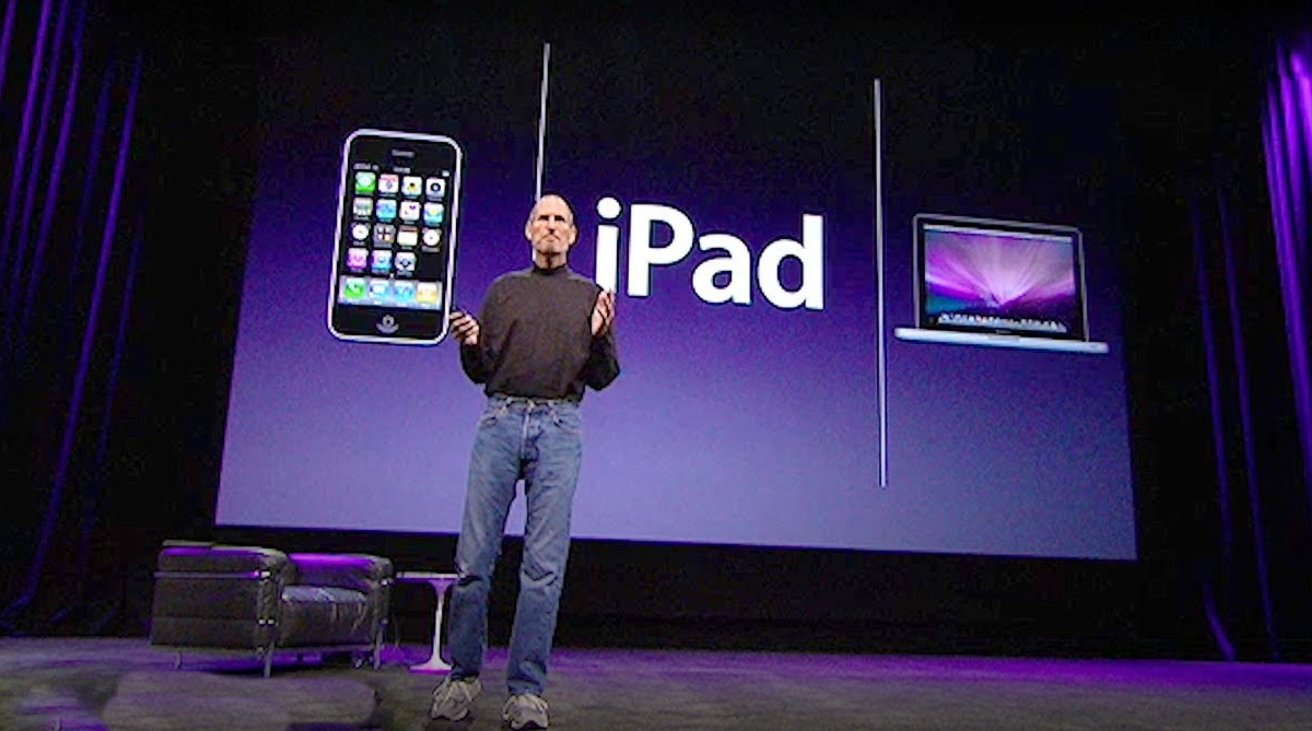From the first iMac in the 1990s to today, the “i” prefix has come to symbolize Apple, but Apple has been working to get rid of it since the original iPad in 2010.
Steve Jobs launched the iPad in 2010: the last Apple device with an ‘i’
There’s still the iPhone and the iPad, of course, but there’s no iWatch or iTV, and certainly no iVision Pro. In the areas of hardware, software and services, Apple named about thirty products with an i, following the success of the iMac in 1998.
It’s just a letter, but it’s so strongly associated with Apple that to this day there are people who call the Apple Watch an iWatch.
They do this even though the last all-new Apple products with the i prefix were iCloud and iAd in 2011. The last all-new hardware device was the iPad in 2010.
When Apple introduced the i
It may be a coincidence, but the iPad was also the last new hardware device that Steve Jobs launched. It’s certainly true that Jobs was a proponent of the i prefix because the guy who coined it says so.
Ken Segall (second from left) with Steve Jobs (second from right)
“I’ll milk this thing as long as I can,” said marketing director Ken Segall Wired. “The fact that I came up with the ‘i’ in the original iMac makes people interested in what I’m saying.”
And what he’s saying is that “the ‘i’ has to go… it’s meaningless now.” Segall says that Steve Jobs built Apple around this letter and the name iMac, but now there are too many companies using it.
It has definitely lost its “Internet” meaning since the iMac helped make Internet connectivity an everyday part of society.
Segall is also correct when he further argues that it is not possible to trademark or otherwise protect the prefix i. And that might actually be why Apple turned away from it.
Apple’s first steps away from i
In 2006, Apple gave one of its rare glimpses of the future when it showed off what would become its television set-top box. At the time it was called “iTV”, but not for long.
It didn’t stay as “iTV” for long.
The British Independent Television (ITV) network objected and the box was eventually released as the Apple TV. At the time, ITV had been operating in Britain for just over fifty years, so it would have had no difficulty proving previous use in court.
Apple has a tradition of not really caring whether someone else is already using a name it wants. For the iPad, the company may have litigated for years to protect the iPad name, for example, but in the beginning it simply bought the name from Fujitsu.
Or so much more recently that it is not clear whether or not this has been resolved, there is the case of the Apple Vision Pro. Before this can launch in China, Apple will have to find a way to settle a trademark fight over the name.
The future of me, Apple
“There may be marketing experts who say Apple would be crazy to drop the prefix – it’s still at the forefront of some of the biggest brands ever,” says Segall, “but it can’t be protected, and has not for far too long there are companies doing ‘i’ internet related stuff, and that’s a problem for Apple, known for its innovation.”
He also acknowledges that Apple may now be more risk-averse about changing names, such as the way it dropped “PowerBook” in 2006 and replaced it with MacBook. Because it is now a much larger company, and therefore there is the potential for even more job losses if something goes wrong, Apple may prefer to play it safe.
But then there’s also the fact that the iPhone is the most successful product in history. Apple could change the name, but that would require a reason, and simply not being as enamored with the letter i as before is not enough.
What we leave behind
Again, there’s still the iPhone and the iPad, plus the iMac, and iCloud and iMessage. But over the years, Apple has dropped the iPod and the iSight.
It also dropped the iBook – twice. First it was the name of Apple’s consumer laptop, and then it was the app for buying and reading books on iPads.
That was renamed Apple Books, and the iBooks Store operated in the same way. The iTools, iDisk, iWeb, iChat, iSync, and iCal disappeared along with a feature you probably never noticed: an iTunes feature called iMix.
Gone and forgotten: Apple’s iSight webcam.
There’s another one, of course, as iTunes is still referenced occasionally. The app is called Music and instead of selling songs, Apple is pushing the Apple Music streaming service.
We still have iOS and iPadOS, plus iMovie, but iPhoto has become Photos, and today iDVD sounds positively prehistoric.
The latter three are still officially part of what was called the iLife collection of apps, while Numbers, Pages, and Keynote are still ostensibly the iWork apps.
But the last release of a product called iLife was in 2010, and while iWork fared better, the last boxed release was in 2011.
So when Ken Segall came up with the name iMac, he created much more than he could have imagined. But now that he wants Apple to turn off the i, he may be missing the fact that Apple has been working on that for more than a decade.
There’s more to it than just naming products, though, and separately, Segall has argued that Steve Jobs’ innovative spirit lives on at Apple.
